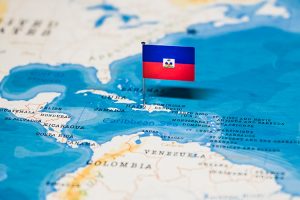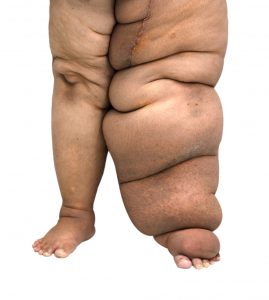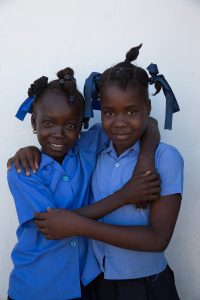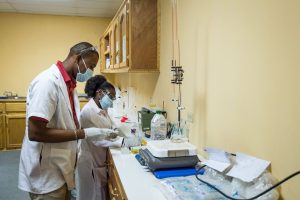Subject: Notre Dame – Haiti Salt Program
All the CSC Salt team is safe, the facility did not sustain any damages, and the same is apparently true for Leogane. We are more than thankful for that. As you can see from news reports, there is tremendous damage in the south and west–with significant loss of life. I am in contact with WFP and Food For The Poor to offer assistance with emergency food programs. It’s unclear what will develop over the next few days but we will see. I also had a note from Cargill asking how they might help. What a burden this country bears. May God be merciful to those who are suffering. More later.
The Haiti Salt Project supports the Congregation de Sainte Croix (CSC) processing facility and its Bon Sel Dayiti brand of fortified salt. The CSC facility is Haiti’s only domestic salt processor. The Bon Sel Dayiti brand provides purified salt fortified with Potassium Iodate (KIO3), which prevents the developmental delays caused by IDD, and Diethylcarbamazine Citrate (DEC), which prevents LF. The Congregation de Sainte Croix works in collaboration with the Haitian Ministry of Health, Cargill Salt and like-minded NGOs such as WFP, IGN, USAID and UNICEF.
Our mission is to eliminate the scourge of LF and IDD throughout this amazing country, and we need your help!

Watch this video to lear more about how we use salt to improve health!
The University of Notre Dame SCNO (Students Consulting for Nonprofit Organizations)
Haiti Salt Project is proud and thrilled to work with the University of Notre Dame’s SCNO team on raising awareness about the work we are doing in Haiti to bring healthy and healing fortified salt to the Haitian people. Click here to learn more about The University of Notre Dame SCNO team. Watch their video below.
 LF or Elephantiasis as it is more commonly known, is spread by mosquitos and caused by infection from the nematode family Filariodidea. It is the most common disfiguring disease in the world, with more than 120 million infected, and more than 40 million disfigured and disabled worldwide.
LF or Elephantiasis as it is more commonly known, is spread by mosquitos and caused by infection from the nematode family Filariodidea. It is the most common disfiguring disease in the world, with more than 120 million infected, and more than 40 million disfigured and disabled worldwide.
Over the past several decades Haiti has made tremendous progress with LF but still has significant endemicity with the disease. We are working hard to eliminate the scourge of LF across Haiti.
 IDD or Iodine Deficiency Disorder, is the world’s leading cause of developmental brain damage. IDD is most easily eliminated with low-cost iodine supplementation in-utero and in early childhood development. IDD is easily and inexpensively preventable by fortifying foods, like salt, with Potassium Iodate (KIO3).
IDD or Iodine Deficiency Disorder, is the world’s leading cause of developmental brain damage. IDD is most easily eliminated with low-cost iodine supplementation in-utero and in early childhood development. IDD is easily and inexpensively preventable by fortifying foods, like salt, with Potassium Iodate (KIO3).
A 2019 Haiti Ministry of Health and UNICEF survey shows that more than 70% of Haitian children and women of childbearing age are iodine deficient. Together we can eliminate IDD from Haiti and help every Haitian child achieve their highest potential.

The Haiti Salt Project runs as a nearly self-sustaining operation each year processing and marketing salt under the brand name “Bon Sel Dayiti” (the Good Salt of Haiti). However, we still need to rely on corporate and individual donations to expand our operations and invest in more efficient operations to deliver this “healing salt” across all of Haiti.
The devastation of IDD and LF in Haiti could be eliminated if The Haiti Salt Project could raise just and additional $10 each from 25,000 caring donations.
The University of Notre Dame’s Global Center for the Development of the Whole Child (GC-DWC) has launched its newest initiative aimed at fostering locally-led, sustainable development projects including Haiti Salt Project.
News from Haiti and affecting Haitian’s around the world.
Love and prayers to our brothers and sisters in Haiti today. We will rebuild and thrive. #haitistrong Hundreds killed in magnitude 7.2 quake in Haiti https://www.reuters.com/business/environment/magnitude-7-quake-strikes-western-haiti-usgs-2021-08-14/
The University of Notre Dame’s Global Center for the Development of the Whole Child (GC-DWC) has launched its newest initiative aimed at fostering locally-led, sustainable development projects. The GC-DWC’s Social Enterprise Initiative (SEI) integrates market forces, sound business principles, and science-based innovations to translate knowledge into opportunities and sustainable excellence
Haiti Salt Project joins the GG-DWC The Haiti Salt Project (HSP), a leading producer and distributor of fortified salt in Haiti, has joined the University of Notre Dame’s Global Center for the Development of the Whole Child (GC-DWC). Founded in 2006 as part of the University of Notre Dame Haiti
Formidable challenges are not new to Father Jean Michelet Dorescar, Congregation de Sainte Croix, C.S.C., and General Manager of Bon Sel Dayiti, a Haitian fortified salt processor. After all, his country endures the ravages of frequent and devastating natural disasters, compounded by chronic economic instability and political unrest. Despite Haiti
The Atlanta Journal-Constitution reports on World NTD Day. Ending Neglected Tropical Diseases is our shared mission. Spread the news! #beatNTDs #EndTheNeglect See more on AJC.com
World NTD Day - January 30, 2021 Help Haiti Salt Project and all of the groups around the globe to help finally end Neglected Tropical Diseases. Together we can change the world. #BeatNTDs #EndTheNeglecthttps://vimeo.com/506862429
With millions forced to work from home this year, offices and shops closing as part of containment measures, and travel severely curtailed everywhere, it was inevitable that the economy would suffe Source: haitinews.net latest rss headlines - Read More
Soup joumou giveaways, virtual shows to mark Independence Day Haitian Times Source: haitinews.net latest rss headlines - Read More
New Haitian TV station launches in Orlando Orlando Sentinel Source: haitinews.net latest rss headlines - Read More
Instead of initiating vaccinations, Haiti records an increase in cases The Queens County Citizen Source: haitinews.net latest rss headlines - Read More
World : 4.87 million people vaccinated - Florida : 47% increase in cases in 24h - New York State : Number of cases doubled in 24h- Canada : Sharp increase in the number of cases - Colombia, Peru and C Source: haitinews.net latest rss headlines - Read More
Soup Joumou Recipe - NYT Cooking The New York Times Source: haitinews.net latest rss headlines - Read More
Haiti's cocoa industry awaits international recognition WIC News Source: haitinews.net latest rss headlines - Read More
US, Canada congratulate Haiti on 217th independence Jamaica Observer Source: haitinews.net latest rss headlines - Read More
On January 1, 2021, the President of Venezuela, Nicolás Maduro, in an official note greeted the Haitian people on the occasion of the 217th anniversary of Haiti's independence... Source: Haitilibre.com / Flash infos - Read More
On Friday January 1, 2021, the Prime Minister of Canada Justin Trudeau made a statement on the occasion of the 217th anniversary of the independence of Haiti... Source: Haitilibre.com / Flash infos - Read More
On the occasion of the new year 2021, the Ambassador of Haiti in Washington, Bocchit Edmond has delivered a message of greetings to all compatriots... Source: Haitilibre.com / Flash infos - Read More
UAE leaders congratulate President of Haiti on National Day MENAFN.COM Source: haitinews.net latest rss headlines - Read More
Michael R. Pompeo, Secretary of State addressed a message to Haiti as part of the commemoration of the 217th anniversary of independence, this Friday, December 1, 2020... Source: Haitilibre.com / Flash infos - Read More
This Friday in honor of Haiti's Independence Day, Mary Estimé-Irvin, Councilor for District 3 of the city of North Miami, invites the community to the Virtual Edition of the 2nd annual celebration of the « joumou » soup which will be broadcasted... Source: Haitilibre.com / Flash infos - Read More
Every donation helps us to get fortified salt to Haitians who need the medicine to prevent LF and IDD. Together we can eradicate these horrible diseases.
We will sent monthly updates about our fight to cure the Haitian people of LF and IDD. Please subscribe and keep in touch!
Please enter your information here. After you click submit, you will be redirected to make your donation to the cause through our educational partner The University of Notre Dame, Global Center for the Whole Child.
